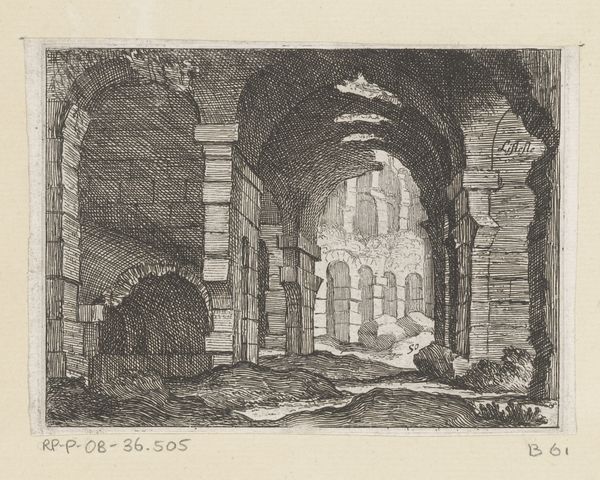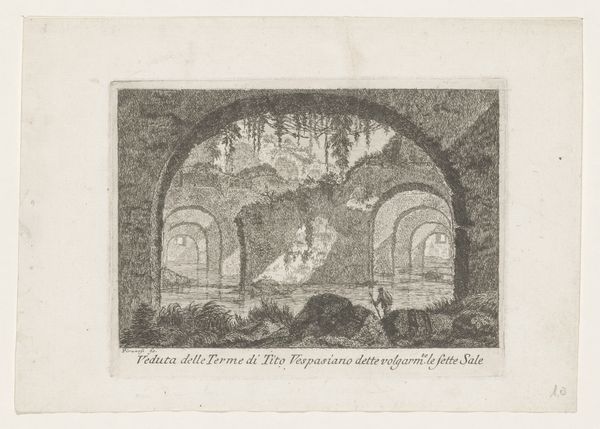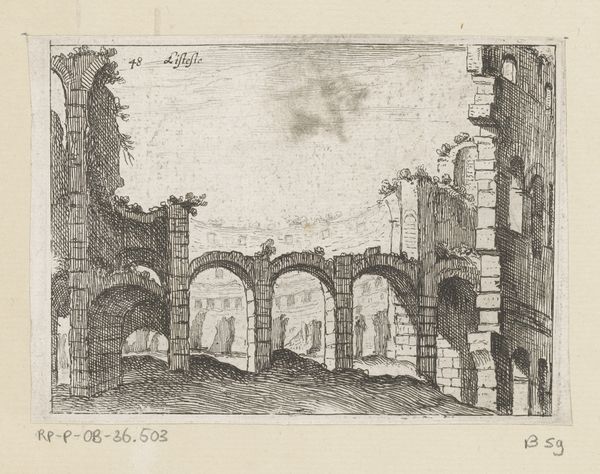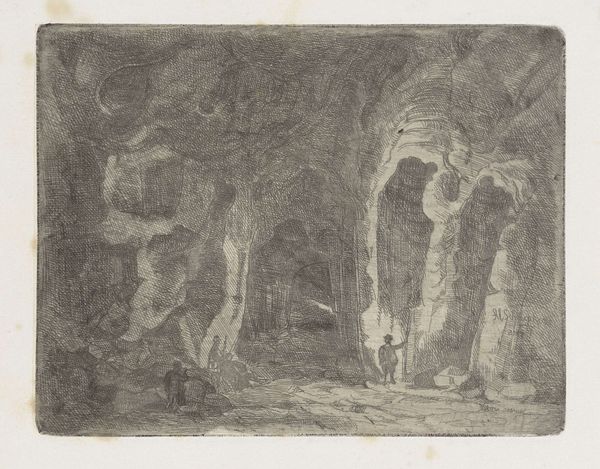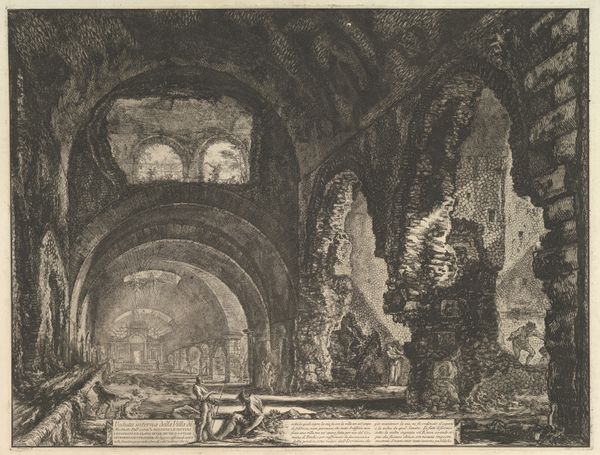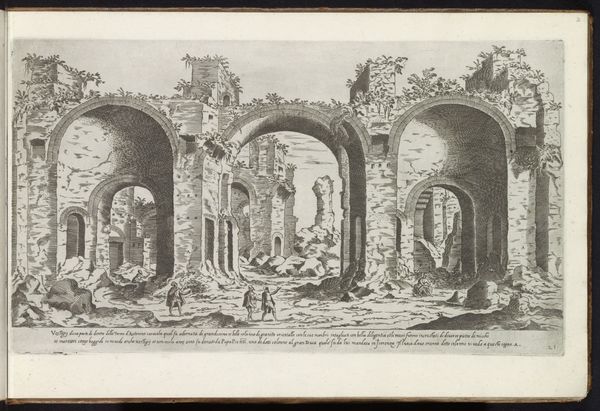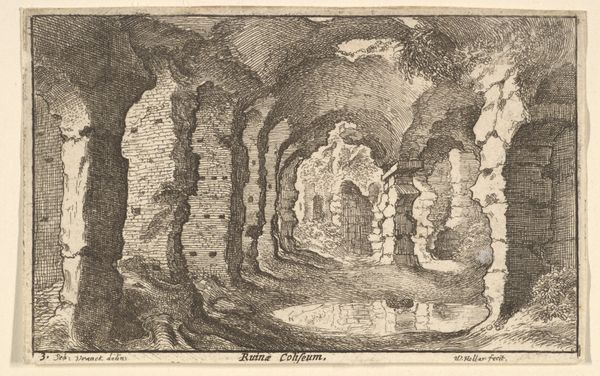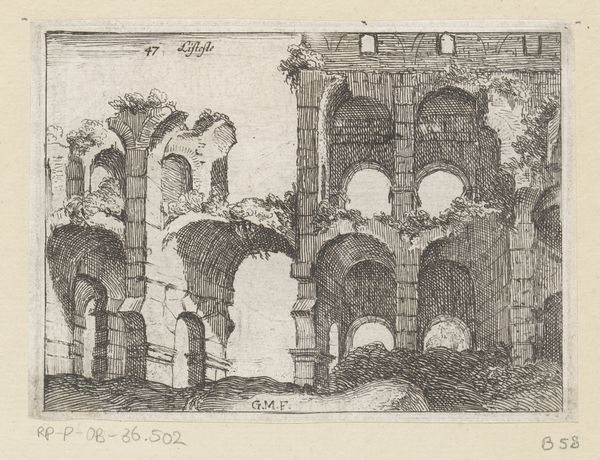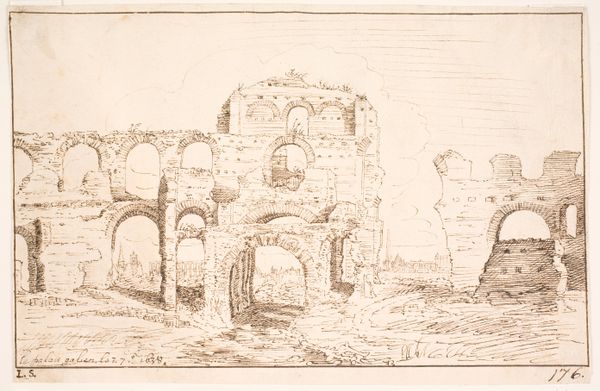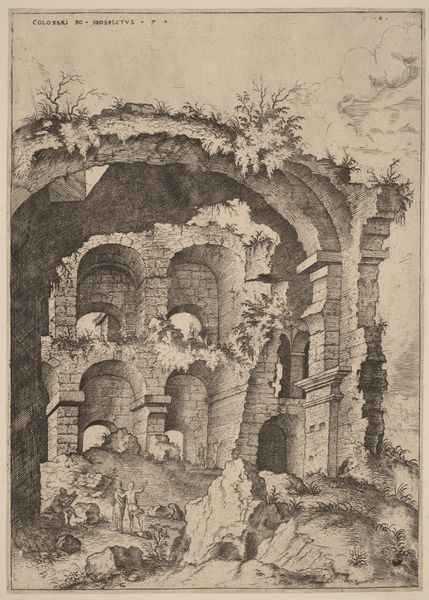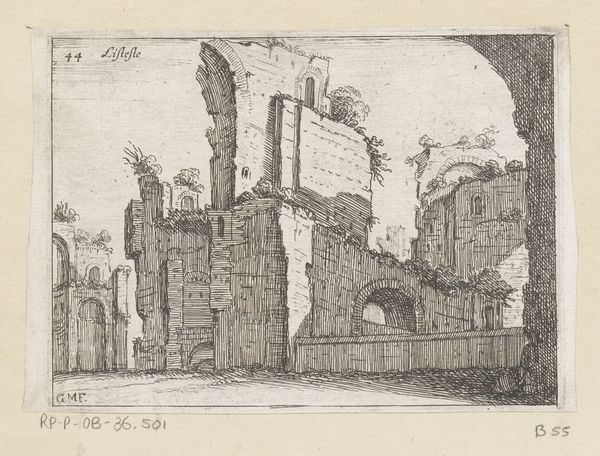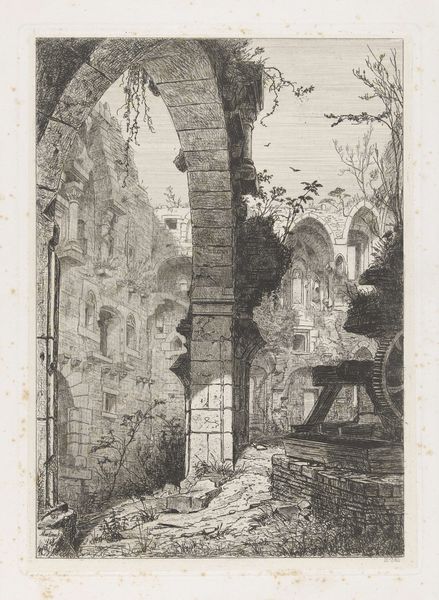
print, etching, engraving, architecture
# print
#
etching
#
old engraving style
#
landscape
#
ancient-mediterranean
#
line
#
history-painting
#
italian-renaissance
#
engraving
#
architecture
#
realism
Dimensions: height 95 mm, width 130 mm
Copyright: Rijks Museum: Open Domain
This is Giovanni Battista Mercati’s print, ‘Remains of the Colosseum in Rome,’ made sometime in the first half of the 17th century. It's etched in ink on paper, a relatively new medium at the time, that allowed for incredibly fine detail and the reproduction of images on a mass scale. Look closely, and you can see how Mercati used closely spaced lines and cross-hatching to create tone and shadow. The ruins almost seem to rise from the page through the sheer labor of the artist’s hand. But there is a contradiction at play here. This image, which so lovingly depicts a scene of decay, was itself made by deploying a relatively new technology, the printing press. A subtle commentary, perhaps, on the march of time, and the relationship between labor, industry, and obsolescence. By focusing on the tactile qualities of the print, and the skilled labor involved in its creation, we can better understand its historical context and artistic value.
Comments
No comments
Be the first to comment and join the conversation on the ultimate creative platform.
